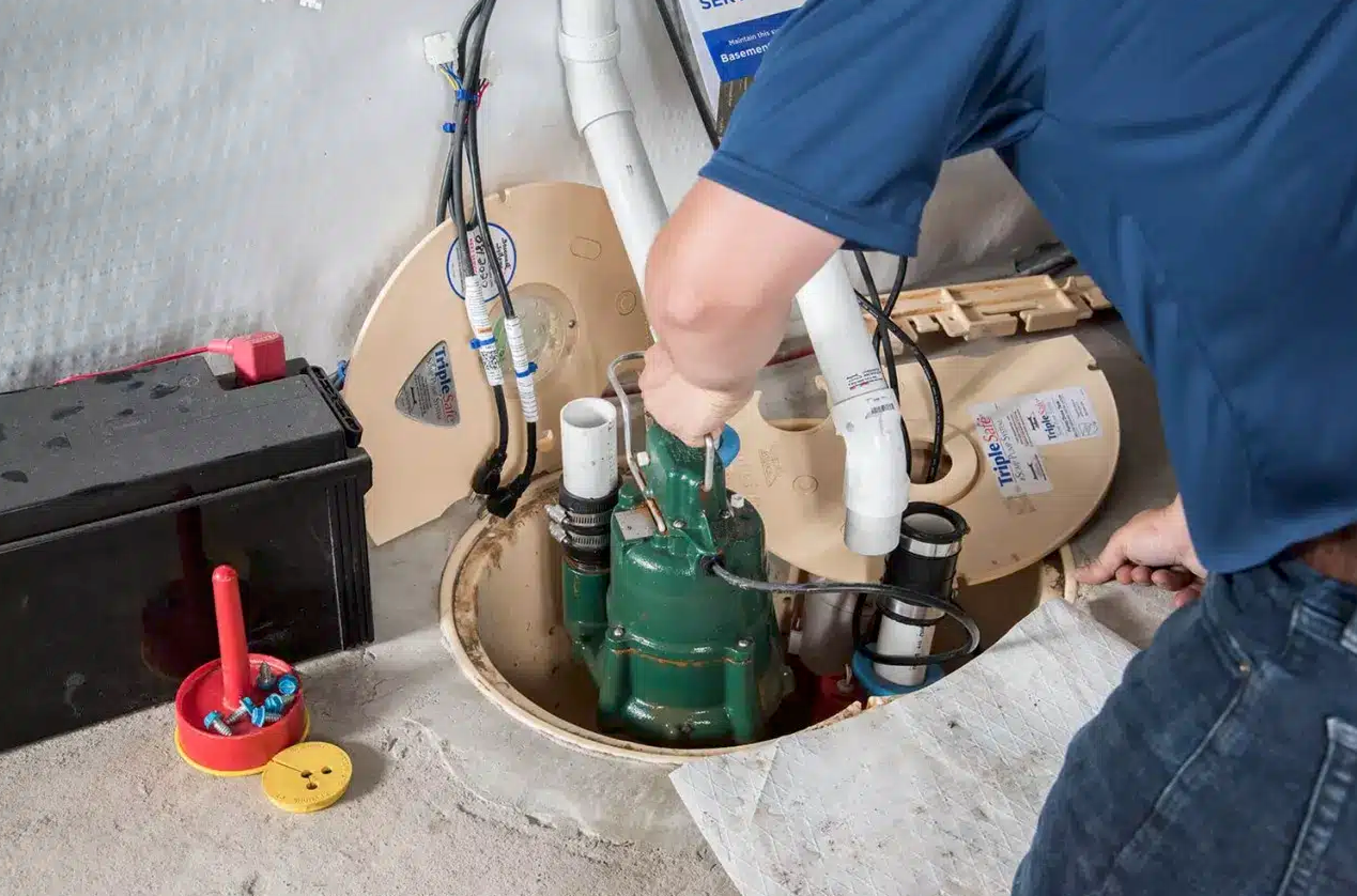There’s nothing worse than discovering a flooded basement during spring melt or a summer storm. For Edmonton homeowners, a working sump pump is one of the best lines of defence against costly water damage.
At Apollo Plumbing, we’ve seen firsthand how proper sump pump maintenance can prevent basement disasters. Whether you’re getting ahead of the rainy season or responding to signs of trouble, here are the must-know tips to keep your basement dry year-round.
Why Sump Pump Maintenance Matters
Your sump pump is your home’s silent protector. It collects and redirects excess groundwater away from your foundation, but like any mechanical system, it needs routine attention to work when you need it most. Make sure to regularly maintain your sump pump to ensure it functions properly during emergencies.
Without proper maintenance, you risk:
- Sump pump failure during a storm or thaw
- Basement flooding that can lead to mould, mildew, or structural damage
- Expensive insurance claims or denied coverage if you are not properly covered for sump pump failures and water backup issues
Investing a little time in upkeep now can save you thousands in repairs later. When choosing a sump pump system, consider the total cost, including potential upgrades or replacements, to ensure reliable protection. Questions? Give our team a call today!
Understanding Water Level Monitoring to Prevent Basement Flooding
Keeping a close eye on water levels in your basement is one of the smartest ways to prevent basement flooding, especially when heavy rainfall or hurricane season begins. Water level monitoring means tracking how much water is collecting in your sump pit, the lowest point in your basement where water naturally gathers. If your sump pump is working properly, it will drain this water away before it can rise above the basement floor and cause damage.
The Role of Monitoring Systems and Backup Power
Installing a water level monitoring system can give you peace of mind by alerting you to rising water before it becomes a problem. This is especially important during a power outage, when your sump pump may not be functioning properly. A battery backup system for your sump pump is a wise investment, ensuring your pump keeps running even if the lights go out.
How Your Home’s Drainage Affects Flood Risk
It’s also crucial to understand how your home’s drainage connects to the city’s sewer system. During heavy storms, the sanitary sewer and storm sewer can become overwhelmed, increasing the risk of sewer backups and basement flooding. To prevent this, make sure your downspouts and catch basins are draining properly and direct water away from your foundation. Installing backwater valves can stop sewage from flowing back into your basement, and regular inspections of your sewer laterals and main sewer line can catch problems early.
Basic Flood Prevention Steps
Don’t forget about the basics: seal any cracks in your foundation walls, keep the basement floor clear of debris, and check that weeping tiles and pipes are free of blockages from tree roots or other debris. After snow melts or a big storm, inspect your sump pit and drainage system to ensure everything is functioning properly.
Consider Your Surroundings
It’s also important to know your property line and be aware of how neighbouring properties might affect water flow onto your land. Sometimes, water flows overland from driveways or yards next door, increasing the risk of overland flooding—when water travels across the ground surface and into your home. Working together with neighbours to manage grading and runoff can help prevent basement flooding for everyone. The city offers resources and may recommend contacting a licensed plumber for inspections or emergency repairs.
What to Do If You Experience Flooding
If you do experience a flood, contact your insurance company right away and follow their procedures for claims. Take steps to mitigate damage, such as sealing cracks and installing weeping tiles or storm shutters if needed. Regular maintenance and proactive monitoring of your drainage system, including your sump pump, pipes, and sewer connections, are the best ways to reduce the risk of costly repairs and keep your basement dry, no matter what the weather brings.
Key Maintenance Steps
Here’s your straightforward plumbing checklist for sump pump upkeep:
Test Your Pump Monthly
Pour a bucket of water into the sump pit. Your pump should turn on automatically and remove the water quickly. If not, it may need servicing or may need to be repaired if it is not working properly, or replaced if it shows signs of failure.
Clean the Sump Pit
Remove any debris, dirt, or gravel from the pit that could block the intake or jam the impeller. Keeping the intake clear helps prevent it from becoming blocked and causing backups.
Inspect the Discharge Pipe
Make sure the discharge line is free of obstructions and directs water away from your home’s foundation. Also, check that all drains connected to the system are clear and functioning properly.
Check the Float Switch
The float activates the pump when water rises. If it’s stuck or worn out, your pump won’t kick in when it should.
Back-Up Power Source
Edmonton storms can knock out power. Consider adding a battery backup sump pump system to ensure continuous operation during outages. When choosing a backup system, check if the unit includes a battery or if it needs to be purchased separately, and follow the manufacturer’s instructions to install the battery backup system or new pump.

Seasonal Tips for Edmonton Homeowners
Spring melt and summer storms make spring and early summer prime time for sump pump prep. Here’s what to do before the water starts rising:
- Inspect after thaw: As the ground warms up, check for early signs of flooding in your sump pit or around your foundation. Also, check window wells for blockages or improper exposure, as water can enter through window wells during heavy rain.
- Check battery backups before storm season, batteries degrade over time.
- Consider Wi-Fi water alarms for added peace of mind when you’re not home.
Fall is also a great time to prepare for freezing temperatures. Insulate discharge lines and ensure the pump is clean before winter sets in.
Signs of a Failing Pump
Not sure if your sump pump is up to the task? Here’s what to watch for:
- Strange noises: Grinding, rattling, or humming could mean mechanical issues.
- Constant running: A pump that never shuts off may have a faulty switch or not be draining properly.
- No activity: If the pump doesn’t turn on during a test, it may be burned out or disconnected.
- Bad odours: Stagnant water or wastewater in the pit can mean the system isn’t working effectively.
If you notice any of these signs, don’t wait. Contact the pros at Apollo Plumbing to inspect and repair your sump pump before it fails.
Issues with the sewer main can also contribute to basement flooding and should be checked if problems persist.
Protect Your Basement with Apollo Plumbing
We’ve been keeping Edmonton basements dry since 1969. Whether you need a routine sump pump check, a new backup system, or an emergency repair, Apollo Plumbing is just a call away.
Our licensed techs are available 24/7, with no overtime fees, and we’ll walk you through exactly what needs fixing before we begin. Straightforward, affordable, and always reliable.
Stay ahead of the water. Contact us today to book your sump pump inspection and keep your basement protected all season long.

